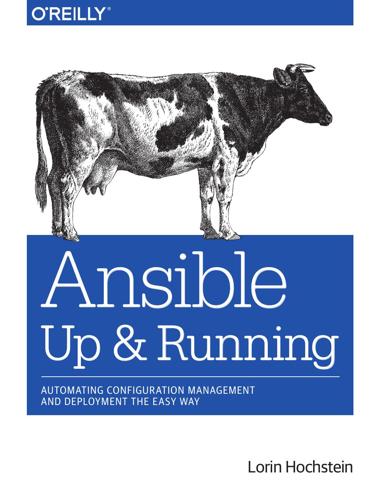
Ansible: Up and Running: Automating Configuration Management and Deployment the Easy Way
by
Lorin Hochstein
Published 8 Dec 2014
We also need to make sure we have the appropriate redundancies in place, so that when failures happen (and they will), our software systems will handle these failures gracefully. Then there are the secondary services that we also need to deploy and maintain, such as logging, monitoring, and analytics, as well as third-party services we need to interact with, such as infrastructure-as-a-service endpoints for managing virtual machine instances.2 You can wire up these services by hand: spinning up the servers you need, SSHing to each one, installing packages, editing config files, and so forth, but it’s a pain. It’s time-consuming, error-prone, and just plain dull to do this kind of work manually, especially around the third or fourth time.
…
Our ansible.cfg file would contain these lines: [defaults] hostfile = inventory Adding Entries at Runtime with add_host and group_by Ansible will let you add hosts and groups to the inventory during the execution of a playbook. add_host The add_host module adds a host to the inventory. This module is useful if you’re using Ansible to provision new virtual machine instances inside of an infrastructure-as-a-service cloud. Why Do I Need add_host if I’m Using Dynamic Inventory? Even if you’re using dynamic inventory scripts, the add_host module is useful for scenarios where you start up new virtual machine instances and configure those instances in the same playbook. If a new host comes online while a playbook is executing, the dynamic inventory script will not pick up this new host.
…
Example 11-10. vagrant_ansible_inventory (multi-machine, with groups) # Generated by Vagrant vagrant1 ansible_ssh_host=127.0.0.1 ansible_ssh_port=2222 vagrant2 ansible_ssh_host=127.0.0.1 ansible_ssh_port=2200 vagrant3 ansible_ssh_host=127.0.0.1 ansible_ssh_port=2201 [web] vagrant1 [task] vagrant2 [redis] vagrant3 This chapter was a quick — but I hope useful — overview on how to get the most out of combining Vagrant and Ansible. Vagrant’s Ansible provisioner supports many other options to Ansible that aren’t covered in this chapter. For more details, see the official Vagrant documentation on the Ansible provisioner. Chapter 12. Amazon EC2 Ansible has a number of features that make working with infrastructure-as-a-service (IaaS) clouds much easier. This chapter focuses on Amazon EC2 because it’s the most popular IaaS cloud and the one I know best. However, many of the concepts should transfer to other clouds supported by Ansible. The two ways Ansible supports EC2 are: A dynamic inventory plug-in for automatically populating your Ansible inventory instead of manually specifying your servers Modules that perform actions on EC2 such as creating new servers In this chapter, we’ll discuss both the EC2 dynamic inventory plug-in, as well as the EC2 modules.
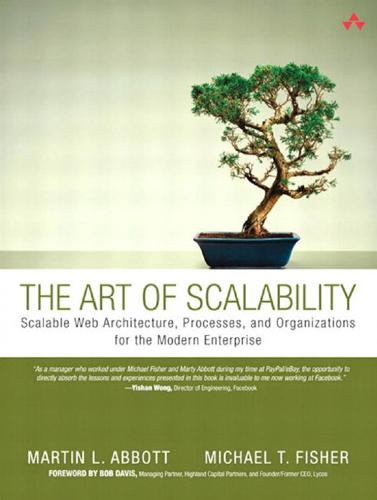
The Art of Scalability: Scalable Web Architecture, Processes, and Organizations for the Modern Enterprise
by
Martin L. Abbott
and
Michael T. Fisher
Published 1 Dec 2009
Key Points • The term cloud has been around for decades and was used primarily in network diagrams. • The idea of the modern cloud concept was put forth by IBM in its Autonomic Computing Manifesto. • Developing alongside the idea of cloud computing was the concept of Software as a Service, Infrastructure as a Service, and many more “as a Service” concepts. • Software as a Service refers to almost any form of software that is offered in a pay as you use model. • Infrastructure as a Service is the idea of offering infrastructure such as storage, servers, network, and bandwidth in a pay as you use model. • Platform as a Service provides all the required components for developing and deploying Web applications and services. • Everything as a Service is the idea of being able to have small components that can be pieced together to provide a new service. • Grid computing as a concept has been around for almost two decades.
…
There are two basic forms that a technology organization can take within a business. One is to be a support service where technology supports the business processes of manufacturing, sales, or any number of other business lines. The other form that technology can take within a business is to be the product for the business, such as with SaaS, infrastructure as a service (IaaS), hardware product companies, or Web 2.0 companies. Being a support service and supporting other key business processes is a fine calling. As a technologist, being the product that the business is founded around, while often more stressful, is great as well. The terms usually applied to these are cost center for the support service and profit center for the product development organizations.
…
Amazon.com was one such company that began modernizing its data centers using early concepts of virtualization over massive amounts of commodity hardware. Having lots of unused capacity most of the time, to deal with peak usage, Amazon decided to sell this as a service.4 Out of the offering of spare capacity as a service came the concept and label of Infrastructure as a Service (IaaS). This term started to appear around 2006 and typically refers to offerings of computer infrastructure such as servers, storage, networks, and bandwidth as a service instead of by subscription or contract. This method was a pay-as-you-use model for what previously required either capital expenditure to purchase outright, long-term leases, or month-to-month subscriptions for partial tenancy of physical hardware.
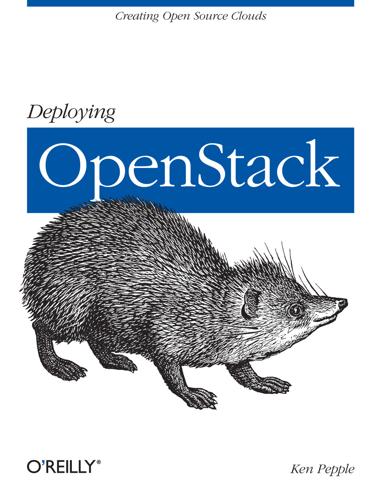
Deploying OpenStack
by
Ken Pepple
Published 26 Jul 2011
It is intended to provide the reader with a solid understanding of the OpenStack project goals, details of specific OpenStack software components, general design decisions, and detailed steps to deploy OpenStack in a few controlled scenarios. Along the way, readers would also learn common pitfalls in architecting, deploying, and implementing their cloud. Intended Audience This book assumes that the reader is familiar with public Infrastructure as a Service (IaaS) cloud offerings such as Rackspace Cloud or Amazon Web Services. In addition, it demands an understanding of Linux systems administration, such as installing servers, networking with iptables, and basic virtualization technologies. Conventions Used in This Book The following typographical conventions are used in this book: Italic Indicates new terms, URLs, email addresses, filenames, and file extensions.
…
In this chapter, we will examine the project’s goals, history, and how you can participate in its future. What Is the OpenStack Project ? The OpenStack Project aims to create an open source cloud computing platform for public and private clouds aimed at scalability without complexity. Initially focusing on Infrastructure as a Service (IaaS) offerings, the project currently encompasses three components: OpenStack Compute: Software to orchestrate, manage, and offer virtual machines. The software for this is called “Nova.” OpenStack Object Store: Software for the redundant storage of static objects. The software for this is called “Swift.”
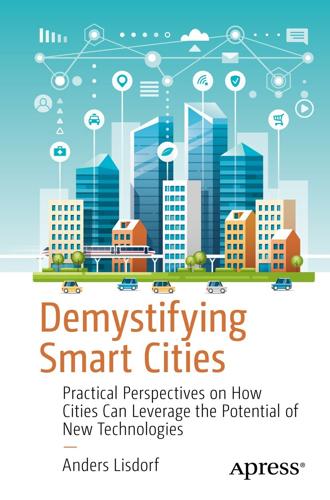
Demystifying Smart Cities
by
Anders Lisdorf
This is why you often hear about a move from capital expenditure to operational expenditure, when it comes to cloud computing. It is not necessary to make capital investments in equipment before starting. Another important point of the NIST definition is the division into three types: Software as a Service (SaaS), Platform as a Service (PaaS), and Infrastructure as a Service (IaaS).Software as a Service – Is the ability of the consumer to access system features through a standard interface like a web browser. The consumer has no control of the underlying infrastructure except for what can be configured in the application. The vendor provides and maintains all aspects of the product except for application-specific configurations.
…
Platform as a Service – Is the capability to deploy to the cloud applications that are developed by the consumer. The consumer has no control of the underlying networks, operating systems, or storage, but has control of the applications that are developed. PaaS storage solutions are AWS S3, Google Cloud Spanner, and Snowflake Data Warehouse. Infrastructure as a Service – Provides the consumer with the capability to provision fundamental computing resources like storage, network, and processing. The consumer is able to install and run any type of software as if it were on private hardware. An example of IaaS data storage is block storage, which can be attached to a virtual machine for extending disk storage.
…
Block chain Bluetooth Bus topology C Chief Information Security Officer (CISO) Cities coalition for digital rights Cities, history and future civilizations data usage pack donkey technology urbanization urbanocene period Civilization Confidentiality Connecting devices cables OSI model physical connections Criminal justice data D Data governance Data management Data profiling Data refinery capability domains access data movement discovery implementations map quality storage structure Data services block chain document databases graph key value stores object storage RDBMS Data source online source sensors system of record Data storage Data value, seven dimensions data sphere improve data value metadata sphere optimization solutions Decision trees Deployment, data cloud characteristics IaaS PaaS SaaS types on premise and cloud on-premise infrastructure Device defined integrated system medical devices microcontrollers processing units sensor and actuator Devices, city central technology organization cloud platforms communication IoT platforms IoT solutions management computer systems security protection challenges botnet CISO DDoS attack device vendors difficult to interact Dyn attack low cost scale Distributed computing Distributed Denial-of-Service (DDoS) attack Domain Name System (DNS) E Employ pragmatic idealism amount of energy architecture principles assemble team artist considerations engineer general idealist grid philosopher politician revolutionary scientist specialist tactician tinkerer compromise count symptoms Energy Engagement models solution spotlights BetaNYC 100 resilient cities Waze connected cities technologies adoption curve development and implementation innovation potential risk-reward working modes work types Enterprise Service Bus (ESB) ETSI Exteros F File transfer protocol (FTP) Food G General Data Protection Regulation (GDPR) Genetic algorithms Graphical userinterface Graph theory H Habit loop Hardware vendors Health data HTTP protocol Human civilization I, J IEEE P2413 Independent researchers Information and communication technologies (ICTs) Infrastructure as a Service (IaaS) Innovation challenges habit loop low-fat yoghurt, avoid Integrity International Organization for Standardization (ISO) Internet of Things (IoT) K Kafka Key value stores K-nearest neighbors algorithm L Legacy systems, modernizing imagination architect real world example Linear regression LinkNYC Local Area Network (LAN) Logistic regression LoRaWAN M Machine learning algorithms advantages and limitations decision trees genetic algorithms K-nearest neighbors linear regression logistic regression naïve Bayes algorithm neural networks reinforcement supervised SVMs unsupervised neural networks Machine-to-machine data access Master data management (MDM) conceptual model data steward deterministic matching logical model physical model Mesh topology Mobility MQTT protocol N Naïve Bayes algorithm Near Field Communication (NFC) Network topologies Neural networks Nongovernmental organizations NYC Mesh NYCWiN network O ODBC Operational data store (ODS) OSI model P, Q Personally identifiable information (PII) Platform as a Service (PaaS) PlowNYC service Point-to-point topology Private research Publish-Subscribe pattern R Raspberry Pi Recycling Reinforcement learning algorithm Relational database management system (RDBMS) S Security standards cryptography device management FIPS 199 identity and access management risks Sensors Simple Storage Service (or S3) Smart city, actors businesses governments individuals organizations researchers vendors Software as a Service (SaaS) Software vendors Star topology features Google doc HTTP protocol point of failure publish-subscribe types Structure of data semi-structured data structured data unstructured data Supervised learning algorithm Support vector machines (SVMs) Supranational organizations Systems integrators T Technology, applications health mobility safety utilities Things Network Tree topology DNS failure vulnerabilities features structure U UDP Universities Unsupervised learning algorithm V Virtual Private Network (VPN) W, X, Y, Z Web services
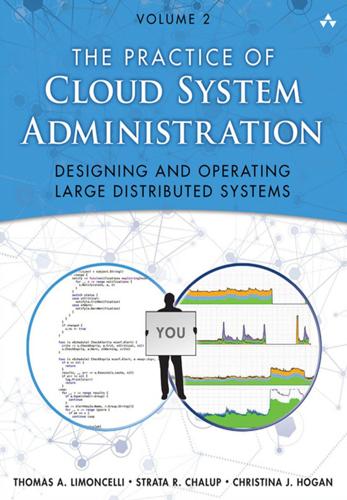
The Practice of Cloud System Administration: DevOps and SRE Practices for Web Services, Volume 2
by
Thomas A. Limoncelli
,
Strata R. Chalup
and
Christina J. Hogan
Published 27 Aug 2014
First printing, September 2014 Contents at a Glance Contents Preface About the Authors Introduction Part I Design: Building It Chapter 1 Designing in a Distributed World Chapter 2 Designing for Operations Chapter 3 Selecting a Service Platform Chapter 4 Application Architectures Chapter 5 Design Patterns for Scaling Chapter 6 Design Patterns for Resiliency Part II Operations: Running It Chapter 7 Operations in a Distributed World Chapter 8 DevOps Culture Chapter 9 Service Delivery: The Build Phase Chapter 10 Service Delivery: The Deployment Phase Chapter 11 Upgrading Live Services Chapter 12 Automation Chapter 13 Design Documents Chapter 14 Oncall Chapter 15 Disaster Preparedness Chapter 16 Monitoring Fundamentals Chapter 17 Monitoring Architecture and Practice Chapter 18 Capacity Planning Chapter 19 Creating KPIs Chapter 20 Operational Excellence Epilogue Part III Appendices Appendix A Assessments Appendix B The Origins and Future of Distributed Computing and Clouds Appendix C Scaling Terminology and Concepts Appendix D Templates and Examples Appendix E Recommended Reading Bibliography Index Contents Preface About the Authors Introduction Part I Design: Building It 1 Designing in a Distributed World 1.1 Visibility at Scale 1.2 The Importance of Simplicity 1.3 Composition 1.3.1 Load Balancer with Multiple Backend Replicas 1.3.2 Server with Multiple Backends 1.3.3 Server Tree 1.4 Distributed State 1.5 The CAP Principle 1.5.1 Consistency 1.5.2 Availability 1.5.3 Partition Tolerance 1.6 Loosely Coupled Systems 1.7 Speed 1.8 Summary Exercises 2 Designing for Operations 2.1 Operational Requirements 2.1.1 Configuration 2.1.2 Startup and Shutdown 2.1.3 Queue Draining 2.1.4 Software Upgrades 2.1.5 Backups and Restores 2.1.6 Redundancy 2.1.7 Replicated Databases 2.1.8 Hot Swaps 2.1.9 Toggles for Individual Features 2.1.10 Graceful Degradation 2.1.11 Access Controls and Rate Limits 2.1.12 Data Import Controls 2.1.13 Monitoring 2.1.14 Auditing 2.1.15 Debug Instrumentation 2.1.16 Exception Collection 2.1.17 Documentation for Operations 2.2 Implementing Design for Operations 2.2.1 Build Features in from the Beginning 2.2.2 Request Features as They Are Identified 2.2.3 Write the Features Yourself 2.2.4 Work with a Third-Party Vendor 2.3 Improving the Model 2.4 Summary Exercises 3 Selecting a Service Platform 3.1 Level of Service Abstraction 3.1.1 Infrastructure as a Service 3.1.2 Platform as a Service 3.1.3 Software as a Service 3.2 Type of Machine 3.2.1 Physical Machines 3.2.2 Virtual Machines 3.2.3 Containers 3.3 Level of Resource Sharing 3.3.1 Compliance 3.3.2 Privacy 3.3.3 Cost 3.3.4 Control 3.4 Colocation 3.5 Selection Strategies 3.6 Summary Exercises 4 Application Architectures 4.1 Single-Machine Web Server 4.2 Three-Tier Web Service 4.2.1 Load Balancer Types 4.2.2 Load Balancing Methods 4.2.3 Load Balancing with Shared State 4.2.4 User Identity 4.2.5 Scaling 4.3 Four-Tier Web Service 4.3.1 Frontends 4.3.2 Application Servers 4.3.3 Configuration Options 4.4 Reverse Proxy Service 4.5 Cloud-Scale Service 4.5.1 Global Load Balancer 4.5.2 Global Load Balancing Methods 4.5.3 Global Load Balancing with User-Specific Data 4.5.4 Internal Backbone 4.6 Message Bus Architectures 4.6.1 Message Bus Designs 4.6.2 Message Bus Reliability 4.6.3 Example 1: Link-Shortening Site 4.6.4 Example 2: Employee Human Resources Data Updates 4.7 Service-Oriented Architecture 4.7.1 Flexibility 4.7.2 Support 4.7.3 Best Practices 4.8 Summary Exercises 5 Design Patterns for Scaling 5.1 General Strategy 5.1.1 Identify Bottlenecks 5.1.2 Reengineer Components 5.1.3 Measure Results 5.1.4 Be Proactive 5.2 Scaling Up 5.3 The AKF Scaling Cube 5.3.1 x: Horizontal Duplication 5.3.2 y: Functional or Service Splits 5.3.3 z: Lookup-Oriented Split 5.3.4 Combinations 5.4 Caching 5.4.1 Cache Effectiveness 5.4.2 Cache Placement 5.4.3 Cache Persistence 5.4.4 Cache Replacement Algorithms 5.4.5 Cache Entry Invalidation 5.4.6 Cache Size 5.5 Data Sharding 5.6 Threading 5.7 Queueing 5.7.1 Benefits 5.7.2 Variations 5.8 Content Delivery Networks 5.9 Summary Exercises 6 Design Patterns for Resiliency 6.1 Software Resiliency Beats Hardware Reliability 6.2 Everything Malfunctions Eventually 6.2.1 MTBF in Distributed Systems 6.2.2 The Traditional Approach 6.2.3 The Distributed Computing Approach 6.3 Resiliency through Spare Capacity 6.3.1 How Much Spare Capacity 6.3.2 Load Sharing versus Hot Spares 6.4 Failure Domains 6.5 Software Failures 6.5.1 Software Crashes 6.5.2 Software Hangs 6.5.3 Query of Death 6.6 Physical Failures 6.6.1 Parts and Components 6.6.2 Machines 6.6.3 Load Balancers 6.6.4 Racks 6.6.5 Datacenters 6.7 Overload Failures 6.7.1 Traffic Surges 6.7.2 DoS and DDoS Attacks 6.7.3 Scraping Attacks 6.8 Human Error 6.9 Summary Exercises Part II Operations: Running It 7 Operations in a Distributed World 7.1 Distributed Systems Operations 7.1.1 SRE versus Traditional Enterprise IT 7.1.2 Change versus Stability 7.1.3 Defining SRE 7.1.4 Operations at Scale 7.2 Service Life Cycle 7.2.1 Service Launches 7.2.2 Service Decommissioning 7.3 Organizing Strategy for Operational Teams 7.3.1 Team Member Day Types 7.3.2 Other Strategies 7.4 Virtual Office 7.4.1 Communication Mechanisms 7.4.2 Communication Policies 7.5 Summary Exercises 8 DevOps Culture 8.1 What Is DevOps?
…
It does not offer an examination of specific products but rather a categorization that will help you understand the variety of offerings. Strategies for choosing between these different services are summarized at the end of the chapter. The term “cloud” is ambiguous; it means different things to different people and has been made meaningless by marketing hype. Instead, we use the following terms to be specific: • Infrastructure as a Service (IaaS): Computer and network hardware, real or virtual, ready for you to use. • Platform as a Service (PaaS): Your software running in a vendor-provided framework or stack. • Software as a Service (SaaS): An application provided as a web site. Figure 3.1 depicts the typical consumer of each service.
…
That is, are you offered a raw machine (low abstraction) or are services provided as a high-level API that encapsulates what you need done rather than how to do it (high abstraction)? The closer you are to the raw machine, the more control you have. The higher the level of abstraction, the less you have to concern yourself with technical details of building infrastructure and the more you can focus on the application. 3.1.1 Infrastructure as a Service IaaS provides bare machines, networked and ready for you to install the operating system and your own software. The service provider provides the infrastructure so that the customer can focus on the application itself. The machines provided by the vendor are usually virtual machines but may be physical machines.
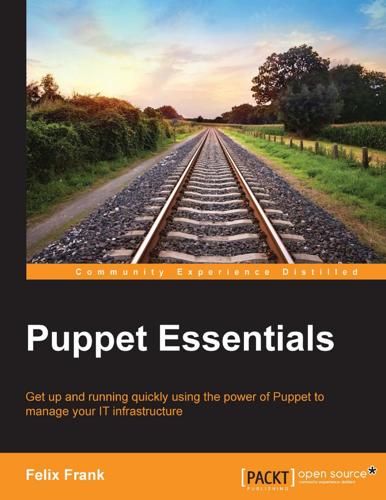
Puppet Essentials
by
Felix Frank
Published 20 Nov 2014
At this layer, you can cleanly express a new configuration that should be effective for all nodes that fill this role: class profile::heimdal_server { include heimdal class { 'ssh': restricted => true } } This is just a very rough sketch of the principles behind the Roles and Profiles pattern. Craig has put up a comprehensive description on his blog, and the design has since been adopted by many users. Taking Puppet to the cloud It's time to finally talk about the cloud, which I managed to avoid when describing the different use cases. We will focus on the Infrastructure as a Service (IaaS) paradigm. These IaaS clouds consist of a network of virtual machines connected to the Internet. Each machine runs a basic operating system, which is chosen by the administrator. If you need a Platform as a Service (PaaS) implementation, read on to learn how you can practically implement your own PaaS system on top of an IaaS cloud using Puppet.
…
[ 206 ] Index A agents initializing, in cloud 185 resources, exporting to 141 anchor pattern about 90 URL 91 antipatterns avoiding 154, 155 apt-get command 8 arrays 15 autorequire feature 125 autoscaling feature about 198 certificates, managing 198-200 round trip times, limiting 200-202 autosigning URL 200 autosigning script 198 B backends selecting 165 URL, for online documentation 165 beaker about 105 URL 105 before metaparameter 19, 21, 24 C classes about 66 component classes, writing 73, 74 comprehensive classes, writing 71, 72 creating, with parameters 92 declaring 66, 67 defining 66, 67 definitions, nesting 82 differentiating, with defined types 69, 70 include keyword, preferring 93 parameterized classes, consequences 92, 93 class inheritance 149 cloud agents, initializing in 185 manifests, building for 187 cloud-provisioner module using 186 collectors used, for realizing resources 140, 141 component classes writing 73, 74 composite design 71 comprehensive classes writing 71, 72 configuration data structuring, in hierarchy 161, 162 containers events, passing between classes and defined types 83-85 limitations 86-89 limitations, mitigating 90 ordering 86 relationships, establishing among 83 containers, limitations anchor pattern 90 contain function 91 control structures adding, in manifest 13, 14 creates parameter 28 cron resource type 29 custom attribute 191 custom facts about 53 Facter, extending with 53-55 custom functions about 96 used, for refining custom module interface 126-128 custom module building 105 enhancing, through facts 125 implementing 106-109 interface, refining through custom functions 126-128 making, portable across platforms 128, 129 naming 106 using 106 utilities, creating for derived manifests 110 custom types 117 D data resources, converting to 172-174 data, defining in manifest consequences 159, 160 defined types about 66 creating 67-69 differentiating, with classes 69, 70 used, for exploiting array values 78-81 using 67-69 using, as macros 77, 78 using, as resource multiplexers 76 using, as resource wrappers 74, 75 dependency 20 documentation, modules 98, 99 domain-specific language (DSL) 8 dynamic configuration files templating 134 dynamic scoping 154 E enabled property 10 ensure property 10 environment.conf file 100 environment locations configuring 100, 101 environments maintaining 99, 100 modules, installing 101, 102 modules, obtaining 101, 102 used, for testing modules 104, 105 evaluation order circular dependencies, avoiding 21, 22 controlling 16 dependencies, declaring 17-20 error propagation 20 events about 23 passing, between classes and defined types 83-85 exec resource type 27 external facts using 55, 56 External Node Classifiers (ENCs) 174 F Faces 186 Facter example 62 extending, with custom facts 53-55 goals 57 systems, summarizing with 50, 51 facts URL, for documentation 125 used, for enhancing custom module 125 fact values accessing 52, 53 using 52, 53 flexibility, providing to classes about 148 class inheritance 149 inheriting class, naming 151 parameters, making safer through inheritance 151 [ 208 ] Forge modules' characteristics, identifying 130 URL 130 used, for searching modules 130 fqdn_rand function 41 fully qualified domain name (FQDN) 52 G group resource type 26 H hashes 14 Hiera arrays, handling 170-172 class parameter values, binding 167-169 configuring 163 data, storing 164 hashes, handling 170-172 lookups, defining 179 practical example 177, 178 using, in different contexts 175, 176 values, retrieving 165 values, using in manifest 165 working with simple values 166, 167 hiera_array function 170 hiera_hash function 171 hierarchy configuration data, structuring in 161, 162 I immutability, variables 14 include keyword preferring 93 Infrastructure as a Service (IaaS) 184 Infrastructure as Code paradigm 105 inheriting class naming 151 installation, modules 101, 102 instances method 123 M manifest about 182 control structures, adding in 13, 14 dry-testing 12 structure 9 manifest, and Hiera designs selecting between 175 manifest, building for cloud about 187 arbitrary configuration files, composing 194-196 certificate names, selecting 190, 191 distributed catalog, creating 191-194 functionality, mapping to nodes 187-189 instance deletions, handling 197, 198 metaparameters 18 model substantiating, with providers 59, 60 modules about 96 agent, enhancing through plugins 116, 117 best practices 102 content structure 97, 98 documentation 98, 99 generalization, avoiding 103 identifying, in Forge 130 important parts 96 installing 101, 102 manifest files, gathering 102, 103 obtaining 101, 102 searching, in Forge 130 testing 104 testing, with environments 104, 105 URL, for publishing 98 monolithic implementation 71 mount resource type 29, 30 N Nginx about 45 Phusion Passenger, using with 45, 46 nodes file 100 Notice keyword 20 [ 209 ] O operatingsystemrelease fact 53 output interpreting, of puppet apply command 11, 12 P Proudly sourced and uploaded by [StormRG] Kickass Torrents | TPB | ExtraTorrent | h33t parameterized classes consequences 92, 93 parameters versus properties 10 parser functions 96 performance bottlenecks avoiding, from templates 136 performance considerations about 42 basic tuning 46 Passenger, using with Nginx 45 switching, to Phusion Passenger 43, 44 Phusion Passenger switching to 43, 44 URL, for installation instructions 45 using, with Nginx 45, 46 Platform as a Service (PaaS) 184 plugins about 116 custom types, creating 118 custom types, naming 118 management commands, declaring 121 provider, adding 121 provider, allowing to prefetch existing resources 123, 124 provider functionality, implementing 122, 123 resource names, using 120 resource type interface, creating 119 sensible parameter hooks, designing 120 types, making robust 125 used, for enhancing modules agent 116, 117 plugins, types custom facts 116 parser functions 116 providers 116 types 116 processorcount fact 52 properties about 10 versus parameters 10 providerless resource types 61 provider parameter 10 providers model, substantiating with 59, 60 summarizing 61 Puppet about 182 installing 8 modules 96 typical scopes 182 URL 182 Puppet agent certificate, renewing 40 life cycle 38, 39 running, from cron 41 setting up 35-37 puppet apply command about 9, 31 output, interpreting of 11, 12 PuppetBoard 186 Puppet Dashboard 186 Puppet Explorer 186 Puppet Labs URL 8 URL, for advanced approaches 43 URL, for core resource types 61 URL, for style guide 52 URL, for system installation information 32 URL, for Troubleshooting section 47 puppetlabs-strings module URL 99 Puppet master about 31 configuration settings, inspecting 35 master machine, setting up 32 master manifest, creating 33, 34 tasks 32 puppetmaster system service 33 puppet module install command 101 Puppet support, for SSL CSR attributes URL 199 [ 210 ] Puppet, taking to cloud about 184 agents, initializing 185 cloud-provisioner module, using 186 Puppet toolchain 46 rspec-puppet module about 105 URL 105 R separate data storage need for 158 singletons 135 site manifest 33 SSL troubleshooting 47, 48 stdlib module 101 strings 15 subscribe metaparameter 23 successful provisioning, ensuring about 202 manifests, testing 204, 205 necessary relationships, adding 203 systems summarizing, with Facter 50, 51 S realize function 138, 139 redundancy saving, resource defaults used 152, 153 relationships, containers performance implications 89 require metaparameter 19 resource chaining 17 resource defaults used, for saving redundancy 152, 153 resource interaction implementing 22-24 resource parameters overriding 147, 148 resources about 10 converting, to data 172-174 exporting 142 exporting, to agents 141 importing 142 realizing, collectors used 140, 141 resources, exporting about 141 central firewall, maintaining 146 custom configuration, automating 144 hosts files, managing 144 master configuration, for storing exported resources 142 Nagios configuration, simplifying 145, 146 SSH host keys, exporting 143 resource type life cycle, agent side 58, 59 resource types cron 29 examining 25, 26 exec 27, 28 group 26 mount 29, 30 user 26 revocation 39 Roles and Profiles pattern 183 T templates performance bottlenecks, avoiding from 136 using 135, 136 template syntax learning 134, 135 transaction 57 Trusted Facts 189 types about 117 summarizing 61 type system 57 typical scopes, Puppet about 182 profiles 183, 184 roles 183, 184 U user resource type 26 utilities, custom module complexity, dealing 115, 116 configuration items, adding 111, 112 creating, for derived manifests 110 [ 211 ] customization, allowing 113 unwanted configuration items, removing 114, 115 W Warning keyword 20 V Y Vagrant 182 variables using 14 variable types about 14 arrays 15 hashes 14 strings 15 virtual resources creating 137, 138 yum command 8 [ 212 ] Thank you for buying Puppet Essentials About Packt Publishing Packt, pronounced 'packed', published its first book "Mastering phpMyAdmin for Effective MySQL Management" in April 2004 and subsequently continued to specialize in publishing highly focused books on specific technologies and solutions.
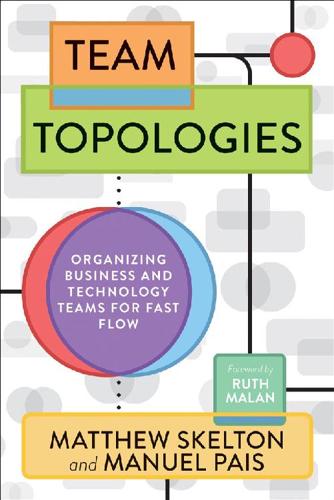
Team Topologies: Organizing Business and Technology Teams for Fast Flow
by
Matthew Skelton
and
Manuel Pais
Published 16 Sep 2019
In January 2018, they evolved their team structures in order to bring development, operations, and the DevOps tooling team closer together. Pulak described to us how this took place: We delivered an Infrastructure as Code (IaC) project on our client’s Azure infrastructure, automatically installing, configuring, and operating an enterprise document management product. We utilized an “Ops as Infrastructure-as-a-Service” pattern for this project. This included early involvement from the Ops team who were checking in operational code and developers who focused on non-functional production requirements from day one. Individuals from the siloed tooling team from the earlier stage were present to help support the infrastructure while this happened.15 A third stage of evolution aimed to build on their earlier success and fully transition the DevOps team from an execution role to an evangelizing one, so that development and operations teams would become self-sufficient and collaborate around automation of the required steps.
…
When considering the relationship between any teams, a key decision is whether to collaborate with another team to achieve an objective or to treat the other team as providing a service (see Figure 7.1 on page 133).This choice between collaboration or consuming a service can be made at many different levels within the organization: consuming infrastructure as a service (from AWS, Azure, or Google Cloud, for instance), collaborating on logging and metrics, relying on a complicated-subsystem team to build a complex audio-processing codec, or working together on application deployment. What must be avoided is the need for all teams to communicate with all other teams in order to achieve their ends; just as a jazz band coordinates the music it plays, we should expect to carefully curate the communication that takes place within an organization.
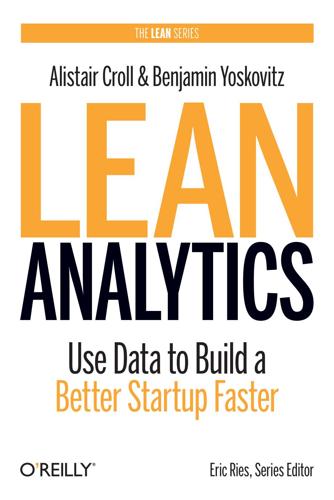
Lean Analytics: Use Data to Build a Better Startup Faster
by
Alistair Croll
and
Benjamin Yoskovitz
Published 1 Mar 2013
Hoskins, Titus, Click-Through Rates Hotwire site, Model Six: Two-Sided Marketplaces Huffman, Steve, Bottom Line Hyatt, Nabeel, Attacking the Leading Indicator hybrid mode (e-commerce model), What Mode of E-commerce Are You? I IaaS (Infrastructure as a Service) model, Model Two: Software as a Service (SaaS) IEEE (Institute of Electrical and Electronics Engineers), Slower Cycle Time Imagine (Lehrer), Stars, Dogs, Cows, and Question Marks in-game advertising, Model Three: Free Mobile App inactive users, defining, Churn Indiegogo site, Model Six: Two-Sided Marketplaces information, kinds of, Eight Vanity Metrics to Watch Out For Infrastructure as a Service (IaaS) model, Model Two: Software as a Service (SaaS) inherent virality, Stage Three: Virality, Virality Instagram site, Static Pixels Eliminates a Step in Its Order Process installation volume metric, Model Three: Free Mobile App Institute of Electrical and Electronics Engineers (IEEE), Slower Cycle Time integration cost metric, Stickiness and Usability intrapreneurs about, Lean from Within: Intrapreneurs BCG box, Changing—or Innovating to Resist Change?
…
If you’re running a SaaS business, here’s what you need to know about metrics. Most SaaS providers generate revenue from a monthly (or yearly) subscription that users pay. Some charge on a consumption basis—for storage, for bandwidth, or for compute cycles—although this is largely confined to Infrastructure as a Service (IaaS) and Platform as a Service (PaaS) cloud computing companies today. Many SaaS providers offer a tiered model of their service, where the monthly fee varies depending on some dimension of the application. This might be the number of projects in a project management tool, or the number of customers in a customer relationship management application.
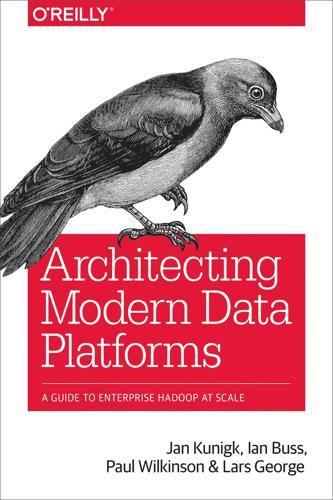
Architecting Modern Data Platforms: A Guide to Enterprise Hadoop at Scale
by
Jan Kunigk
,
Ian Buss
,
Paul Wilkinson
and
Lars George
Published 8 Jan 2019
In practice, the setup mode is the most prevalent one, and it mitigates the need for having separate database systems, considerably reducing the operational overhead. See “Database HA” for an in-depth discussion on the HA setup for service databases. Hosted database mode If your Hadoop installation is hosted—that is, deployed in a private or public cloud infrastructure, providing infrastructure as a service (IaaS) and, optionally, platform as a service (PaaS)–you might be able to defer all of the complexities to the service provider. For example, Amazon Relational Database Service (Amazon RDS) provides hosted RDBMSs that can be configured to run in a replicated, HA-enabled mode. Following the same principles as with non-hosted setups, you have the choice of not owning the infrastructure but paying for what you need on a per-usage basis.
…
Taking Hadoop to the Cloud In the previous chapters, we studied how to build Hadoop clusters that meet enterprise requirements; we now turn our attention to achieving the same in the cloud. Cloud technology enables the entire stack of information technology to be consumed as fully programmable and automated services. For example, storage, networking, and servers become infrastructure as a service (IaaS), and platform-level software such as database deployments or access management software becomes platform as a service (PaaS). The high degree of programmability and automation allows almost complete self-service for the customer to control and customize each layer, from IaaS to PaaS.
…
Cloud Foundry connects and combines many offerings from the EMC/Dell universe to build private cloud IaaS and PaaS stacks. Even though we regularly see VMware hypervisors in virtualized on-premises Hadoop environments, we are not aware of an end-to-end automation offering. There is a plug-in available for Cloudera Director that automates the provisioning of VMware-based infrastructure as a service, but the plug-in does not use the VMware Distributed Resource Scheduler (DRS) to achieve anti-affinity. VMware has also been the driving force behind the contributions around Hadoop Virtual Extensions (HVE), which introduce hypervisor awareness in HDFS’s block placement hierarchy. However, HVE in its approach is strictly limited to HDFS and requires an external mechanism to reflect the topology of hypervisors in the virtual cluster to the NameNodes.
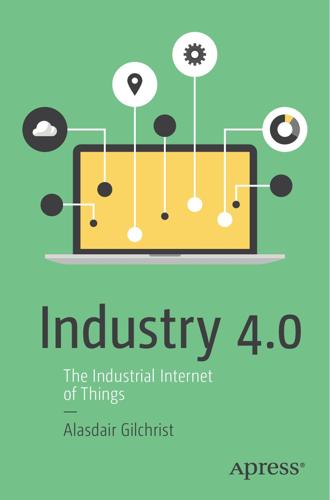
Industry 4.0: The Industrial Internet of Things
by
Alasdair Gilchrist
Published 27 Jun 2016
The cloud will stretch to accommodate the demand without any customer interaction; the cloud will manage the demand dynamically by assigning more resources. There are three categories of service—IaaS (Infrastructure as a Service), PaaS (Platform as a Service), and SaaS (Software as a Service). Each category defines a set of services available to the customer, and this is key to the cloud— everything is offered as a service. This is based on the earlier SOA (service orientated architecture), where web services were used to access application functions. Similarly, the cloud operators use web services to expose their features and products as services. • IaaS (Infrastructure as a Service)—AWS’s basic product back in 2005 and it offered their excess infrastructure for lease to companies.

Modern Monopolies: What It Takes to Dominate the 21st Century Economy
by
Alex Moazed
and
Nicholas L. Johnson
Published 30 May 2016
The company heavily invested in creating a third-party software ecosystem around its core applications. Today, its app store has millions of app downloads and is an important part of Salesforce’s value proposition. Other cloud software industries have evolved in a similar manner, such as cloud data storage and so-called infrastructure-as-a-service (IaaS) companies. Both Google App Engine and Amazon Web Services have robust development platforms with thousands of available apps and integrations. Healthcare software is another great example of this trend. The first wave of new healthcare software came during the dot-com era. Like Wilson’s Dentasoft and most enterprise software at the time, these products were sold for large, up-front fees.
…
Brian, 21 AT&T, 11, 106–7, 196 athenahealth, 79 Auction Web, 21 Auctionata, 15 audience building: defined, 239; do-or-die nature of, 132; explained, 126–27; hacking networks for growth, 129–31; importance of, 154; liquidity and, 132, 192; Operation SLOG, 127–29; PayPal and, 131–32; platform category and, 47; Uber and, 152 Baidu, 19, 30, 95, 97–99, 105, 220–22 Balsillie, Jim, 7–11, 13–15 BAT, 221 Beanie Babies, 28 Benchmark, 81, 142 Benioff, Marc, 79 Best Buy, 23 Best Use of Resources, The (Kantorovich), 52 Bilton, Nick, 142, 159–60 Bing, 99; see also Microsoft BlackBerry, 7–15, 81, 141; App World, 13; Storm, 12–13 Booking.com, 203 Boston Consulting Group, 56, 240 Breeze, 205 “bring your own device” (BYOD) policies, 9 Buffet, Warren, 80 burning platform, 2–5, 7 business models, explained, 22–25 Büyükkükten, Orkut, 122, 173 capitalism: competition and, 74–75; platform capitalism, 99–100 CD-ROMs, 62, 67 central planning, 52–55, 60–61, 70, 72–73 Chatroulette, 159–61, 164, 167, 169, 174, 186, 239 Chesky, Brian, 130–31, 150 chicken-and-egg problem: monetary subsidies, 196–97; monetary subsidies and product features, 199–201; product features, 197–98 cloud computing, 32–33, 66, 77, 79–80 Club Nexus, 122, 173 Coase, Ronald, 36, 55–56, 58, 60, 69–70 Cold War, 74 collaboration, 184–86 Color, 189–90 Comcast, 18, 102 commoditization, 44–47, 212, 231, 239 communication, 183 community, 185–86 competition, 53, 66, 74–75, 90–91, 99, 103, 106, 222 Competitive Advantage (Porter), 58 “Computer and the Market, The” (Lange), 61 connection, 30, 39–41, 46, 69, 74, 87, 101, 112, 116–17, 127, 161–62, 166–72, 183 connectivity, 64–66, 70 coordination cost, 36, 59 core tools and services, 40, 126, 146–57 core transaction: compensate, 115–16; connect, 114; consume, 114–15; create, 113–14; diagram, 39; exchange platforms, 118; explained, 39, 111–12; four actions of, 113; maker platforms, 118–19; platform types and, 43–47; steps, 116–17; Tinder and, 119–20 Costolo, Dick, 141, 143 Craigslist, 129–31, 198 Crocodile in the Yangtze, 97 curation, 183–84 data analytics, 66 decentralization, 34, 52–56, 61, 63, 66, 68, 70, 72–74, 89, 146, 233–34 democratization of processing power and storage, 65–66 Dentasoft, 77–79 Dentistry.com, 78 Didi Kuaidi, 99 digital advertising, 106 Doctor on Demand, 80, 228 Dorsey, Jack, 142 dotBank, 131 dot-com era, 20–22, 26, 29, 31–32, 63–64, 67, 79, 175, 214, 226–27 Dropbox, 82, 203 EachNet, 96 eBay, 6, 19, 21–22, 27–30, 41, 70, 95–100, 116, 131–32, 144, 150, 213–14, 221 eClinicalWorks, 79 e-commerce, 19, 29, 96–99, 104, 204, 221, 224, 227 economies of scale, 56, 59–60, 68, 72, 75, 86, 103, 240 ecosystems: competition and, 13, 221–22; enterprise software and, 79; monetary subsidies and, 199; open, 10; value and, 69, 92, 111, 152–54; war of, 3, 7, 15 efficiency, 18, 24, 52, 55–56, 79, 86, 89, 103, 147–48, 228, 230 electronic medical record (EMR) systems, 79–80 Elop, Stephen, 1–5, 7 Encarta, 62, 68; see also Microsoft Encyclopaedia Britannica, 62, 67–68, 85 encyclopedias, 62, 68, 85 enterprise software, 78–80 entrepreneurship, 63, 77, 109–10, 146, 157, 175, 181, 189, 220 Epic Systems Corp., 79 Erisman, Porter, 97–98 Etsy, 19, 77–78, 93, 115, 200 European Union, 100 Evans, Benedict, 203 Evans, David S., 95 expanding markets ExxonMobil, 22, 60 Facebook: Adyen and, 203; competition and, 74, 174; core transaction and, 118; data and, 70. 72; derivative businesses and, 206; Facebook Home, 220; GitHub and, 35; growth, 67, 224; identity and, 178–80; Messenger, 218–20; network effects, 170–74, 183; open source and, 33; privacy and, 106–8, 155; simplicity and, 122–23; success, 18–19, 30, 81, 164–67, 212; terminal decline and, 209–10; transactions and, 37, 149, 153–54; value, 30; Twitter and, 139, 142–44; Zynga and, 207–9 Farmville, 207–8, 218 Financial Times, 3 firm, theory of, 55–61 Flickr, 18, 155 Force.com, 79; see also Salesforce Ford, 7, 14, 24–25, 60, 112 fragmentation, 103, 220, 226–28, 230, 235 Garden.com, 64 Gebbia, Joe, 109, 131 General Electric, 22, 60, 231 General Motors (GM), 22, 24–25, 60 GitHub, 35–38, 41 Glamsquad, 15, 45, 156 Gooden, Dave, 130 Goodrow, Cristos, 135–36 Google: Gmail, 129, 174; Google Ventures, 15; Nest, 6; Orkut, 122, 173, 221; Play Store, 12, 197, 220–21; Search, 6, 73, 135, 151, 154, 221; see also Android government regulations, 80, 101–2, 106, 108, 152, 203, 213–17, 229–30, 232, 234–35 graphical user interfaces (GUIs), 35 Greenspan, Aaron, 123 Gross, Bill, 141 Gurley, Bill, 81, 93, 142–43 Handy, 30, 32, 45–46, 90–93, 116, 145, 149–51, 156, 181, 194, 199, 216, 220 Hanrahan, Oisin, 90 harassment, social media and, 143 Harlow, Jo, 2–3 Hatching Twitter (Bilton), 142 Hayek, Friedrich, 53–55, 59, 61, 63, 70–73 Heins, Thorsten, 7–8 Henderson, Bruce, 56–60, 69, 72 Homejoy, 91–92, 177 houseSYSTEM, 122–23, 147 Hyatt, 87 IBM, 33, 71, 235 information goods, 85 infrastructure-as-a-service (IaaS), 79 inputs/outputs, 58, 111–12, 117 Instacart, 32, 147–49, 216 Instagram, 30, 46–47, 81, 107, 114, 119, 144, 146, 194, 201, 221, 229 investors, 21–22, 63, 77, 81–83 iPhone, 1–2, 8–14, 38, 141, 196, 211; see also Apple IPOs, 20–22, 29–30, 154, 209, 217 iTunes, 6, 11, 221; see also Apple Jackson, Eric M., 132 James Bond, 49, 54 Jobs, Steve, 11, 13–15 J.P.

Platform Capitalism
by
Nick Srnicek
Published 22 Dec 2016
Zuboff, 2015: 78. 27. Ibid. 28. For one example of a data value chain, see Dumbill, 2014. 29. Finnegan, 2014. 30. Davidson, 2016. 31. CB Insights, 2016b. 32. Henwood, 2003: 30. 33. Hook, 2016. 34. Clark and Young, 2013. 35. Burrington, 2016. 36. In the industry, these are known respectively as ‘infrastructure as a service’ (IaaS), ‘platform as a service’ (Paas), and ‘software as a service’ (SaaS). 37. Clark, 2016. 38. Miller, 2016. 39. Asay, 2015. 40. McBride and Medhora, 2016. 41. Webb, 2015; Bughin, Chui, and Manyika, 2015. 42. Bughin, Chui, and Manyika, 2015. 43. Alessi, 2014. 44. World Economic Forum, 2015: 4. 45.

The Measure of Progress: Counting What Really Matters
by
Diane Coyle
Published 15 Apr 2025
Competition concerns aside, the attractions of cloud use are obvious—reduced in-house IT needs, both skills and equipment, access to the latest software, flexible on-demand usage. Ofcom’s research 168 Chapter Six found that 82 per cent of respondents had increased their cloud use in recent years, and 79 per cent expected to continue doing so in the following eighteen months. Different service options are available, usually divided into Infrastructure as a Service (IaaS, raw compute); Platform as a Service (PaaS, a virtual environment); and Software as a Service (SaaS, use of applications provided by the cloud provider or an independent software supplier they host). Most of the familiar uses fall into this latter category, from personal Gmail to Microsoft Office 365 to the BBC’s iPlayer.
…
See also economic growth growth accounting, 42–47 Guide to Measuring Global Production (UNECE), 77–78 happiness, measuring, 233, 235 hard to measure conundrum, 179–80, 180 health: in economic measurements, 1–2, 244; human capital estimations and, 63, 215, 226–27 hedonic adjustment, 189, 237; quality change and, 180, 191–92 hedonic index, real output growth rates and, 192 hedonic regression, 201; adjusting price indices and, 138–39 Hicksian reservation price, 183, 190 household: innovation for, 107; shifting market transactions to, 99–102 household capital, 113–16 household/home production, 105; GDP and, 106–7; lack of attention paid to, 124–25; productivity growth and transfer of time input to, 67–70, 68; technology and substitution of for market production, 110; user-generated digital products, 129, 143–45 household satellite accounts, 107–9, 108 301 How to Pay for the War (Keynes), 24 HP printers, 95, 96 human capital accounting, 224–27; comprehensive wealth framework and, 251; economic statistics and, 63; estimating stock of, 227; including health status in, 215 Human Development Index (HDI), 236, 243 human footprint, 205, 206 hybrid work, 120–21, 163 hyperscalers, 89, 167–69, 169–70, 196 ICT (digital information and communication technologies): enabling remote work, 163; factoryless goods production and, 79; firm-level productivity and, 52, 53, 54; production networks, 57–58 imputation: for barter, 131–33; in GDP statistics, 17–18, 18; of value of digital goods and services, 20 inclusive wealth, 214 income distribution, measurement of economic welfare and, 260 index method, 48 Index of Sustainable Economic Welfare, 244 India, IT services sector in, 163 India Stack, 173–74 indicators, in alternative indices, 245–46, 246 inflation: constant utility construct for measuring, 192–93; consumer price indices and, 184; distributional consequences of, 188; measuring, 178–79; politics of statistics on, 185 Information Rules (Shapiro & Varian), 127–28 infrastructure: comprehensive wealth framework and, 248; data on, 62–63; defined, 60–61; digital public, 171–76; internet, 166–67; social, 61 Infrastructure as a Service (IaaS), 88, 168, 169 innovation: for the household, 107; questioning benefits of some, 3–4; S-shaped logistic curve for spread of, 9; von Hippel, 140–42 innovative property, as intangible asset, 229 302 inputs: growth accounting and, 43–47; time as, 121–24 intangible assets, 61, 152, 157, 215, 229, 229, 231 intangible investment, scale of, 228–29, 229, 230 intangibles, 97, 157, 228–33 intellectual property rights, subscription economy and, 95 International Trade in Services Survey (ITIS), 160 iPhone, 102, 102–3, 155 J curve, 39, 70 John Deere, subscriptions and, 41, 94 Jorgenson-Fraumeni approach, 226 KLEMS (capital, labour, energy, materials, and services) growth accounting framework, 11, 43–46, 55 labour: gig employment, 20, 105, 116–20; hybrid and remote work, 120–21; substitution of capital for, 100–1 labour productivity, 35, 35–36; decomposing, 48–52; defining, 50; growth accounting and, 45–47; time and, 66 Laspeyres index, 181–82, 183, 193 leisure/consumption, time-based approach to productivity and, 66, 67–69, 68, 70 leisure time: effect of hybrid and remote work on, 120–21; SNA accounting for, 107–8 life satisfaction, measuring, 234, 235, 236–37; as measure of well-being, 241–42 lifetime earnings, human capital and, 225 Light as a Service model, 82–83 Likert scale, 234 living standards: democratic institutions and increasing, 221; leisure time and, 107–108; productivity and, 34, 36–37; slow growth in, 3–4, 5 Living Standards Framework (LSF), 233, 236, 245, 246 i n de x machine learning (ML), decision-making and, 29–31.
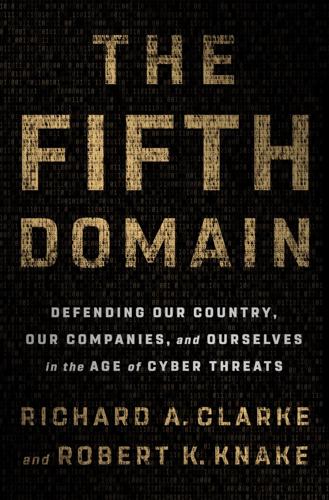
The Fifth Domain: Defending Our Country, Our Companies, and Ourselves in the Age of Cyber Threats
by
Richard A. Clarke
and
Robert K. Knake
Published 15 Jul 2019
Instead of a company building its own data center or stuffing servers into its closet, Amazon builds and maintains the computing environment and leases it to the company on a metered rate. It has proven the perfect solution for start-ups that need infrastructure on which they can build their own applications. This type of cloud computing is known as infrastructure as a service (IAAS). Amazon and other leaders have also started to sell platform-as-a-service offerings that provide the coding environments on which to build applications. Far and away the best way to rapidly increase security is to move from local computing to software as a service (SaaS). Salesforce, one of the early successful SaaS providers, never sold its customer relationship management platform as a software package you could install on your own computer.
…
W., 6 Bush, George W., 6, 11, 88, 89, 96, 113, 130, 135, 156, 222, 228 California, 117, 123 cameras, 289–90 Carlin, John, 125 cars, driverless, 266–67, 269–70 Carter, Ash, 193, 225 Causes of War, The (Van Evera), 100 Center for Internet Security, 117 Center for Strategic and International Studies (CSIS), 89, 101, 110, 113 certified information security manager, 146 certified information system auditor, 146 certified information systems security professional, 146, 149 Chamber of Commerce, 44, 109–11, 113, 118 Chaudhuri, Swarat, 80 Chemical Facility Anti-Terrorism Standards, 114–15 Chen, Adrian, 219 Cheney, Dick, 275 chief information officers (CIOs), 72, 300 chief information security officers (CISOs), 5, 33, 40, 49, 56, 64, 65, 69, 72, 87, 151, 170, 177, 178, 244, 300 China, 5, 24, 28, 33–34, 39–41, 43, 46, 50, 97, 159–60, 166, 182, 187, 195, 196, 198, 214, 217, 241, 242, 248, 252, 272 5G and, 267–68 internet and Great Firewall of, 87, 205, 206, 208, 210, 211, 215 People’s Liberation Army, 26, 28, 176, 305 quantum computing and, 256, 259, 260, 262, 264 China Telecom, 119–20 CIA, 23–24, 37, 110, 124, 152, 173, 194 Citibank, 8, 38, 136, 284 civil service system, 171, 173 Clarke, Richard A., 3–4, 6, 10–11, 21, 59, 65, 89, 124–25, 156, 168, 220, 254, 291 Cyber War, 6–7, 13, 26, 37, 78, 192, 200 Warnings, 162, 223 CLEAR, 137 Clinton, Bill, 3–4, 6, 11, 88, 113, 168, 221 Clinton, Hillary, 223, 232–33 Clipper chip, 124 cloud, 5–6, 71–77, 104, 206, 215, 291–92, 298, 300 CLOUD Act, 214, 215 Cloudflare, 87, 119 Coats, Dan, 26, 159 Cole, Alma, 170 Columbia University, 102 Comey, James, 124, 125 Commerce Department, 88, 140 see also National Institute of Standards and Technology Comprehensive National Cyber Initiative, 96 CompTIA Security+ certification, 146 Computer Fraud and Abuse Act, 100 Congress, U.S., 99, 109, 114, 116–18, 124, 130, 144, 159, 165–66, 171, 172, 178, 196, 214, 228, 231–33, 259, 268–69 ReallyU and, 138, 140, 141 Senate, 78, 232 Conley, Caitlin, 225–26 Constitution, U.S., 94, 228 containers, 71, 77 contractors, 170–71, 174 Cook, Tim, 124, 125 Cornell University, 250 Council of Europe Convention on Cybercrime, 212–13, 216 credit cards, 286–87, 293 credit reporting, 284 CrowdStrike, 33, 34, 36, 46, 55, 60, 61, 67, 77, 83 cryptocurrencies, 6, 73, 289 Cyber Command, 23, 43, 97, 150–51, 173, 183, 184, 191–98, 220, 233, 300 CyberCorps, 168–70, 172–73, 177, 178 Cyber Defense Matrix, 65–67, 82 Cyber Independent Testing Lab, 82 cyber insurance, 5, 121–23 Cyber Operations Academy Course, 148 cyber resilience, 13–15, 42, 70–72, 82, 104, 105, 296–97 cybersecurity: AI in, 244–48, 252 apprenticeship programs for, 152–53 building in, 67, 72 center for policy on, 101 data on, 39–43, 72 information sharing in, 58–61, 95, 112 as part of national security, 90, 94 personal, 283–93 quantum computing and, 254 as shared responsibility between government and private sector, 10–13, 88–96, 105 spending on, 5, 91 venture capital investment in, see venture capital workforce for, 144–53, 167–78 Cybersecurity and Infrastructure Security Agency (CISA), 171–72, 177, 178, 300 Cybersecurity Talent Initiative, 152–53 Cyberseek, 145, 146 cyberspace, 6, 88, 208, 210 Cyber Threat Alliance, 61 cyber war, 7–10, 19, 182–84, 197–98, 221, 239, 296–97 AI in, 239–41 diplomacy and, 202–3 escalation of instability into, 28–29, 198 naming cyber warriors, 27–28 quantum computing and, 254, 263–64 Cyber War (Clarke and Knake), 6–7, 13, 26, 37, 78, 192, 200 Cyber War Risk Insurance Act (CWRIA), 123, 301 Cylance, 34, 55, 67, 83 Daniel, Michael, 61, 92–93, 205 Darktrace, 246 dark web, 38, 40, 41, 126 data, 257 AI and, 247–48, 251 backing up, 127, 291–92 on security, 39–43, 72 data lake, 247, 301 data mining, 243 DEF CON, 73, 102, 127 Defending Digital Democracy, 225–26 defense, see offense and defense Defense Advanced Research Projects Agency (DARPA), 12, 78, 249–50, 252, 301 Defense Cyber Crime Center, 198 Defense Department (DoD), 6, 27, 79, 81, 94–95, 132, 147, 149, 152, 165, 176, 181–203, 181–203, 221–22, 225, 229–30, 249 budget of, 201 clarity of mission in, 199–200 Cyber Command, see Cyber Command Cyber Strategy of, 181–82, 195 diplomacy and, 202–3 escalation dominance and, 202 five missions of, 184–92 National Security Agency, see National Security Agency and securing arsenal, 200–201 system failure capabilities and, 202 tabletop exercises and, 185–92, 198, 225–26 unity of command in, 198–99 defense industrial base (DIB), 49, 50, 184, 190, 301 Defense Information Systems Agency, 198 Defense Science Board, 190 Demchak, Chris, 120 Democratic Congressional Campaign Committee, 231–32, 302 Democratic National Committee, 26 Democratic Party, 11, 224 Deputies Committee, 222 Deputy Assistant Secretary of Defense (DASD), 198, 225 design basis threat, 115 “detect” function, 45, 66, 70–71 DevOps, 72, 80 Devost, Matt, 295 DiGiovanni, Frank, 143, 147–50, 153 Digital Resilience (Rothrock), 14 Dimon, Jamie, 91, 92, 191 diplomacy, 202–3, 218, 221 direct-recording electronic (DRE) machines, 230–31, 301 distributed denial-of-service (DDoS) attacks, 38, 73, 85–87, 118–19, 191, 215, 268, 276, 301 DLA Piper, 19, 37 Docker, 71, 77 domain names, 88 Domain Name System (DNS), 12, 118–20, 207, 210, 276, 301 Dornbush, Evan, 148, 149 driver’s licenses, 135–37 drones, 248–50 D-Trip, 231–32, 302 Dugan, Regina, 249 Duo, 131–33 Dyn, 276–77 Economist, 103, 181 economy, 8, 109–10 Edelman, David, 210 Einstein, Albert, 9, 256 Einstein program, 95, 96 elections, 219–35 Russia and, 26, 159, 160, 222–23, 227, 228, 230–35 of 2016, 26, 159, 160, 222–23, 227, 228, 230, 232–35 Electronic Frontier Foundation (EFF), 207, 208 Electronic Funds Transfer Act, 115 email, 46, 52–55, 59, 133, 288–89, 291 encryption, 10, 18, 96, 103, 124–25, 260–62, 291, 292, 302 Endgame, 251 endpoint detection and response (EDR), 55, 61, 83, 96–97, 149, 163, 175, 298 endpoints, 65, 245, 302 Energy Services Group, 272, 276 Equifax, 115–16, 284 Escalate, 149, 152 EternalBlue, 18, 22, 23 European Commission, 216 European Union (EU), 206–7, 211–12, 220–21 exploits, 21, 35, 51, 57–58, 302 Extended Area Protection and Survivability System, 190 Facebook, 67, 71, 91, 134, 209, 213, 221, 224, 231, 232, 285, 287–88, 292 Farook, Syed, 123–25 FATF-style regional bodies, 216 FBI, 22, 23, 43, 78, 93, 95, 98, 99, 124–25, 152 Federal Aviation Administration, 279 Federal Communications Commission (FCC), 120, 268–69 Federal Deposit Insurance Corporation, 115 Federal Energy Regulatory Commission (FERC), 158, 279 Federal Financial Institutions Examination Council, 114 Federal Trade Commission, 232 FedEx, 19, 37 Fierce Domain, A (Healey), 102 Financial Action Task Force (FATF), 216, 302 Financial Services Information Sharing and Analysis Center, 59–60 Financial Systemic Analysis & Resilience Center (FSARC), 60 Financial Times, 94 fingerprint readers, 131 FireEye, 34, 36, 53 firewalls, 70, 87, 159, 160 5G mobile telephony, 265–69, 280 Five Guys, 21–22 Fly, Jamie, 223 Food and Drug Administration (FDA), 275–76, 278–79 France, 25, 209 Friedman, Allan, 101 Gable, Jim, 258 Gagnon, Gary, 56–58 Gartner, Inc., 65, 274 gas industry, 272–73 Gates, Bill, 129–31, 133 Geist, Michael, 213 Germany, 209, 214, 215 Gibson, William, 3, 10, 208 Gillespie, Ed, 230 Global Information Assurance Certification, 146 glossary, 299–308 Goldsmith, Jack, 208 Google, 8, 52, 63–64, 74–76, 80, 81, 91, 132, 134, 138, 149, 153, 205, 209, 213, 232, 253, 258, 259, 261, 263 government, 24, 85–88, 109–28, 297 cloud and, 77 cybersecurity as shared responsibility between private sector and, 10–13, 88–96, 105 cybersecurity positions and, 153, 167–78 equities issue and, 21 identification and, 134, 135, 139–41 internet and, 12–13, 86, 88 and naming cyber warriors, 27–28 national security and, 88, 90, 153 Presidential Decision Directive 63 and, 10–11, 59, 89 regulation by, 109–20, 122–23, 139–40, 268–69, 278 smart cards and, 130 state, 117–18, 174–75, 177 Government Accountability Office (GAO), 175, 189, 200 Granholm, Jennifer, 155 Grant, Jeremy, 135, 136 Great Britain, 17–18, 25, 96, 211–12, 220–21 Group of 7, 216 GRU, 19–23, 25–26, 28, 165, 234, 277, 302 Guido, Dan, 81 hackers, 73, 78, 79, 127, 147–48, 251 Hagel, Chuck, 225 Harkins, Malcolm, 83 Harris, Kamala, 117 Harvard University, 44, 152 Belfer Center, 100, 225 Hayden, Michael, 35 Healey, Jason, 102–3 Health and Human Services Department (HHS), 40, 136 health care, 40–42, 83, 123 Hernandez, Steve, 170 Homeland Security, Department of (DHS), 6, 21, 86, 93, 95, 96, 109, 110, 113, 114, 136, 152, 168, 175, 191, 199 Cybersecurity and Infrastructure Security Agency, 171–72, 177, 178 Office of Cybersecurity and Communications, 151 power grid and, 158–59, 162 Homeland Security Council, 102 Homeland Security Policy Directive 7 (HSPD 7), 89 Homeland Security Presidential Directive 12, 130 Homer, Jonathan, 159 honeypots, 246, 303 Howard, Rick, 60–61 Huang Zhenyu, 28 Huawei, 267–68 IBM, 80, 251, 253, 258, 261 Idaho National Laboratory, 157 Idaho State University, 167–70 “identify” function, 45, 66, 70 identity, 133–34, 138 federated, 134 government and, 134, 135, 139–41 ID cards, 135, 137, 139, 140 identity and access management (IAM), 245, 303 personally identifiable information (PII), 115–16, 141, 283–84, 305 proofing, 133–36, 138, 140 see also authentication Immersive Labs, 149–50 industrial control systems (ICS), 163, 270, 271, 303 information sharing, 58–61, 95, 112 information sharing and analysis centers (ISACs), 11, 303 information technology (IT), 18, 36, 37, 50, 53, 54, 65, 66, 68, 70–72, 74, 75, 83, 87, 110, 173, 174, 243, 270, 303 cost of, 201 IT Services Agency proposal, 176–78 OT and, 273–74 Shadow, 72 spending on, 91 statewide departments, 174–75 infrastructure as a service, 75 Initial Occurrence Syndrome, 162, 223 Inskeep, Todd, 40, 45–46 intellectual property, 34, 42–43 “Intelligence-Driven Computer Network Defense Informed by Analysis of Adversary Campaigns and Intrusion Kill Chains” (Hutchins, Cloppert, and Amin), 49, 51, 52 intercontinental ballistic missile (ICBM), 166, 303 International Conference on Information Warfare, 49 International Strategy for Cyberspace, 205, 210, 295 internet, 8, 9, 11–13, 78, 86, 90, 91, 96, 120, 157, 205–11, 215, 293 government and, 12–13, 86, 88 Russia and, 206, 208, 210, 211, 219–20 Schengen Accord for, 205–18 Internet Corporation for Assigned Names and Numbers (ICANN), 12, 102, 210 Internet of Things (IoT), 265, 266, 268–70, 274–80, 289, 303 vehicles, 266–67, 269–70 Internet Research Agency, 219–20 Interpol, 161, 217 intrusion prevention systems (IPS), 70–71, 94–95, 244 iPhones, 36, 68, 124–25, 292 Iran, 5, 27, 28, 85–87, 98–99, 119, 120, 126, 163, 185–88, 191–96, 198, 208 nuclear program of, 20, 37–38, 85, 87, 97, 160, 193, 194, 270–71 IronNet, 93–94, 246 IRS, 136, 138–40 Islamic State in Syria (ISIS), 193, 201, 303–4 Israel, 23, 160, 185–86, 190, 192 Mossad, 44, 46 IT Services Agency (ITSA), 176–78 Jaffer, Jamil, 94 Janow, Merit, 102 Jenkins, Neil, 61 Joint Improvised Explosive Device Defeat Organization, 51 Joint Worldwide Intelligence Communications System, 189 Joyce, Rob, 73–74, 97 JPMorgan Chase, 9, 49–50, 85, 91–92, 94, 101, 136, 191 Justice Department (DOJ), 10, 12, 22, 27–28, 124, 125, 194, 217 Karagiannis, Konstantinos, 263 Kaspersky Anti-Virus, 22–23, 36 Kennan, George, 13 Kennedy, John F., 9 Kerry, John, 227–28 kill chain, 49–61, 70, 298 Knake, Robert K., 6, 61, 153, 286 Cyber War, 6–7, 13, 26, 37, 78, 192, 200 Koppel, Ted, 155–57 Kurtz, George, 34 Levy, Steven, 207 Lewis, Jim, 89 Lights Out (Koppel), 157 Livingston, John, 271–75 Lockheed Martin, 49–52 Long, Fan, 80 Longhorn, 24, 37 L0pht, 78, 79, 119 machine learning (ML), 42, 53, 80, 81, 243–52, 263–64, 304 see also artificial intelligence Madam Secretary, 157, 161 Maersk, 19, 29, 37 Malik, Tashfeen, 123–25 malware, 46, 53–55, 59–61, 79, 85, 86, 149, 304 managed security service provider (MSSP), 144, 229, 304 Manhattan Project, 9 Mansouri, Mohammad, 126 Markoff, Michele, 210 Marsh, Robert, 88–89 Martin, Harold, 22–23 Mastercard, 152, 153 Mattis, James, 195 McAfee, 33, 61, 67, 251, 288 McAuliffe, Terry, 230–31 McGeehan, Ryan, 71 McKinsey & Company, 8, 271 McLaughlin, Mark, 60–61 medical devices, 275–76, 278–79 Merck, 19, 29, 37 Metcalfe’s Law, 209–10, 245 Mickens, James, 44 microphones, 290 Microsoft, 8, 18, 20–22, 24, 36, 37, 44, 74–76, 81, 129, 131, 152, 213, 253, 261, 285 Windows, 18, 36, 79, 129, 190, 276, 288 military, 11–12, 13, 87, 95, 150, 161, 163, 181–203 Air Force, 50, 102, 166, 183 Army, 150, 170, 183, 195 cybersecurity training and, 143, 147–48 Navy, 95, 150, 163, 183, 189–90, 198, 200, 201 see also Defense Department Mirai, 119, 277 missiles, 165–66, 303 MIT, 80, 152, 169, 263 MITRE Corporation, 55–58, 60, 112 mobile devices, 289–90, 292 5G and, 265–69, 280 Mohammadi, Ehsan, 28 Mollenkopf, Steve, 265 Mondelēz, 19, 37, 121 Moore’s Law, 209–10 Morenets, Alexei, 28 Moss, Jeff, 127, 295 Mossad, 44, 46 Mueller, Robert, 161 multifactor authentication (MFA), 46, 129, 131–34, 137, 304 Murphy, Matt, 181 mutual legal assistance treaties, 215 NAFTA, 213 Nakasone, Paul, 233 NASA, 79, 169, 263 Nash, Lorina, 17 National Academy of Sciences, 3 National Cybersecurity Protection System, 96 National Cyber Strategy, 92, 182 National Defense Authorization Act, 195–96 National Institute of Standards and Technology (NIST), 64–65, 140, 261, 304 Cybersecurity Framework, 44–45, 66, 70, 111, 117 cybersecurity workforce crisis and, 144–45 National Plan for Information Systems Protection, 109 National Science Foundation, 168 national security, 88, 90, 94, 104–5, 153 National Security Agency (NSA), 18, 21–23, 35–37, 43, 68, 73, 93, 96, 103, 124, 125, 168, 189, 194, 200, 233, 254, 267 Tailored Access Operations, 73, 148, 307 National Security Council (NSC), 6, 89, 97, 102, 110, 111, 203, 222, 224 National Security Presidential Memorandum 13, 182, 196 National Strategy for Trusted Identities in Cyberspace (NSTIC), 111–12, 134–36, 138 National Strategy to Secure Cyberspace, 156 National Transportation Safety Board, 273 NATO, 221, 222, 225, 234 natural gas, 272–73 Navy, U.S., 95, 150, 163, 183, 189–90, 198, 200, 201 Navy Marine Corps Intranet, 27 NeSmith, Brian, 144 Netflix, 72, 76 Network Master, 246, 248, 252, 263, 264 neural networks, 80, 243–44 New York, 117, 123, 155–56, 174 New York Cyber Task Force, 75, 101–4 New York Times, 205 New York Times Magazine, 219 Niejelow, Alex, 153 Nikias, C.

The Costs of Connection: How Data Is Colonizing Human Life and Appropriating It for Capitalism
by
Nick Couldry
and
Ulises A. Mejias
Published 19 Aug 2019
Instead of data being stored at each individual computer and each individual node deciding what data to share or not share, the cloud represents a model in which data is stored in “banks” that are owned by private corporations. Owning and maintaining these clouds is the largest-growing IT sector, with $547 billion estimated to be spent worldwide on infrastructure-as-a-service by the end of 2018.33 Once data generated by individuals is stored in the cloud, it is the corporations that decide what data other users are allowed to “borrow” from the bank, without those users being able to permanently store it in a way that would let them freely reproduce or transform it.
…
See also social quantification sector information technology (IT) sector: cloud computing as largest growth sector of, 46–48; internal colonizing and social quantification sector, 55; in United States, 104 infrastructures of connection: cloud computing as episteme, 42–43; data and emerging social order of capitalism, 19–27; defined, 6; embedding of computer systems in human life, x; geography of data colonialism, 17–18; goal of, xix–xx; and historical colonial exploration, 94–95; infrastructure-as-a-service, 47–48; logistics of, 39; networked services as platforms, 51; network effect, 26–27; neural networks, 142; “tethered” devices, 15; as violent, 45–46. See also Cloud Empire; social media Instagram, 11, 110, 236n58 insurers, 136, 147 intellectual property: consent to platform use, 28–30, 93–94; copyright infringement monitoring, 59; and free-trade agreements, 105 intelligent personal assistants: and autonomy, 170; data and emerging social order of capitalism, 23; and social knowledge, 133 International Telephone & Telegraph, 96 internet: data and emerging social order of capitalism, 19–21; distributed ownership of resources by, 46–48; Free Basics (Facebook) as “free” internet, 12, 49, 97; inception of, xx; Marco Civil (Brazil) on, 181; and monopoly-monopsony hybrids, 44; net neutrality, 15; origin of, 19; traffic flow statistics, 44, 103, 136; users of, as exploited labor, 101–2.

The Nature of Software Development: Keep It Simple, Make It Valuable, Build It Piece by Piece
by
Ron Jeffries
Published 14 Aug 2015
As you can see in the figure, everything starts with the physical infrastructure. We’ll discuss that in this chapter. The next chapters each zoom out one step at a time to encompass wider, more distributed concerns as we go. You may notice that the words “as a service” don’t appear anywhere in the diagram above. The distinctions between “Infrastructure as a Service” and “Platform as a Service” were never strong to begin with. As vendors have sliced, diced, and triangulated their way across the landscape, those classifications have broken down completely. It’s more useful to look at different technology platforms in terms of those layers of responsibility: Which layers do they drive/does the platform drive completely by API?
…
If not, at least testing and debugging the recipes is straightforward because you only have to account for one initial state rather than the stucco-like appearance of a long-lived machine. When changes are needed, you update the automation scripts and build a new machine. Then the outdated machine can simply be deleted. Not surprisingly, immutable infrastructure is closely aligned with infrastructure-as-a-service (IaaS), platform-as-a-service (PaaS), and automatic mapping. Convergence is more common in physical deployments and on long-lived virtual machines and manual mapping. In other words, immutable infrastructure is for cattle, convergence is for pets. Continuous Deployment Between the time a developer commits code to the repository and the time it runs in production, code is a pure liability.
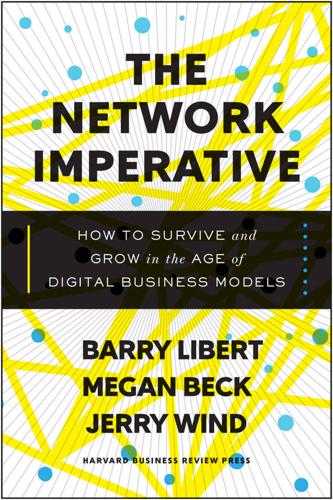
The Network Imperative: How to Survive and Grow in the Age of Digital Business Models
by
Barry Libert
and
Megan Beck
Published 6 Jun 2016
When reviewing IBM’s evolution over the past few decades for Forbes, Bridget van Kralingen, general manager for IBM North America, said simply, “Sometimes companies must fully transform their portfolios.”1 IBM deserves applause for its willingness to reallocate its portfolio. In 2005, IBM sold its personal-computer business to Lenovo, giving up its stake in an industry it was credited with inventing. Over the past decade, IBM has reallocated much of its capital to investment in high-value, high-growth initiatives, such as the purchase of infrastructure-as-a-service company Softlayer, the development of cloud platform Bluemix, and the creation of an app marketplace. Van Kralingen gives the call to action in crystal clear terms. Companies in a crisis need to look at their entire portfolios, rationally and candidly, and figure out what they have that customers want today and what customers will want tomorrow.
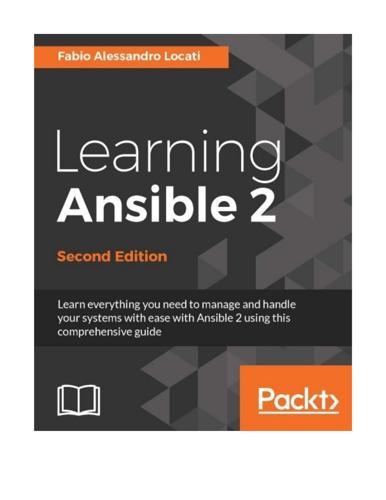
Learning Ansible 2 - Second Edition
by
Fabio Alessandro Locati
Published 21 Nov 2016
We'll focus a lot more on provisioning new machines in this chapter with a lesser focus on configuration management. Provisioning resources in the cloud With that, let's jump to the first topic. Teams managing infrastructures have a lot of choices today for running their builds, tests, and deployments. Providers such as Amazon, Rackspace, and DigitalOcean primarily provide Infrastructure as a Service (IaaS). When we speak about IaaS, it's better to speak about resources not virtual machines for different reasons: • The majority of the products that those companies allow you to provision are not machines but other critical resources such as networking and storage • Lately, many of those companies have started to provide many different kind of compute instances ranging from bare-metal machines to containers • Setting up machines with no networking (or storage) could be all you need for some very simple environments, but might not be enough in production environments Those companies usually provide API, CLI, GUI, and SDK utilities to create and manage cloud resources throughout their whole lifecycle.
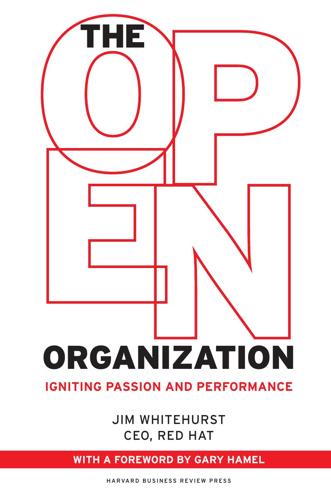
The Open Organization: Igniting Passion and Performance
by
Jim Whitehurst
Published 1 Jun 2015
By incorporating these technologies, Red Hat has become the only open source company that can offer an open source cloud stack that includes an operating system, middleware, and virtualization. The company also revealed its open hybrid cloud technology vision for the future of IT, including plans for building and managing Infrastructure-as-a-Service (IaaS) and PaaS public and private clouds. As its portfolio grows, Red Hat continues to influence the future of technology by supporting open source projects like OpenStack, Fedora, and GlusterFS, and by defending patent law legislation, including amicus submissions to the US Supreme Court.
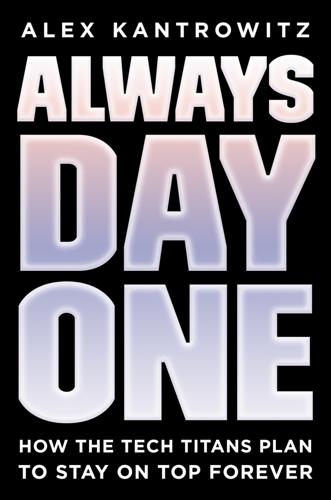
Always Day One: How the Tech Titans Plan to Stay on Top Forever
by
Alex Kantrowitz
Published 6 Apr 2020
“Over a period of years, all those CIOs would either be moving to the cloud or they would be fired,” Athey said of the results. While Microsoft waited, Amazon built AWS and took the lead in cloud services. By 2013, the year Ballmer announced he was stepping down, AWS controlled 37 percent of the $9 billion “infrastructure as a service” market and was growing 60 percent annually. Microsoft was far behind, with 11 percent of the market. Microsoft faced a similar decision with Office. The Office suite was a main draw for Windows devices, which many people bought to use Word and Excel. Making it available across mobile devices and web browsers threatened Windows.
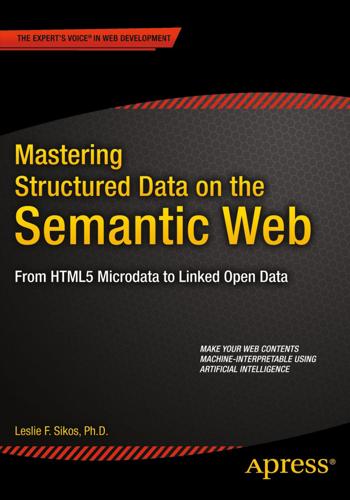
Mastering Structured Data on the Semantic Web: From HTML5 Microdata to Linked Open Data
by
Leslie Sikos
Published 10 Jul 2015
Online shopping, flight booking, hotel booking, navigation, public transport services, government services, community services, and media services are parts of our daily lives. However, the range of service offerings is widening. In the information technology (IT) industry, for example, there is also an endless variety of services. In the more and more popular cloud computing environments, the fundamental service models are Infrastructure as a Service (IaaS), such as Amazon EC2 and Google Cloud Storage; Platform as a Service (PaaS), such as WHM, Microsoft Azure, and the Google App Engine; and Software as a Service (SaaS), such as Hosted Exchange, GoogleApps, and NetSuite. Further services in the IT industry contain, but are not limited to, Database as a Service (DBaaS), Graph as a Service (GaaS), Storage as a Service (STaaS), Test Environment as a Service (TEaaS), API as a Service (APIaaS), Network as a Service (NaaS), and Unified Communications as a Service (UCaaS).
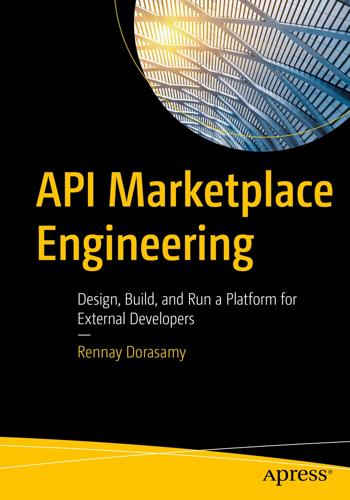
API Marketplace Engineering: Design, Build, and Run a Platform for External Developers
by
Rennay Dorasamy
Published 2 Dec 2021
The context in which the application executes may appear trivial – however, root user or write access to a file system may unwittingly yield to security backdoors. The same rigor that applies to traditional deployment must be applied to containers. Infrastructure : Does your solution run on on-premises hardware or do you deploy to Infrastructure-as-a-Service (IasS) or Platform-as-a-Service (PaaS) public cloud solutions? If the latter, then new security policies and governance must be defined to maintain solution and platform integrity. Process: Consider the seemingly simple objective of providing a third party with credentials to access an API.
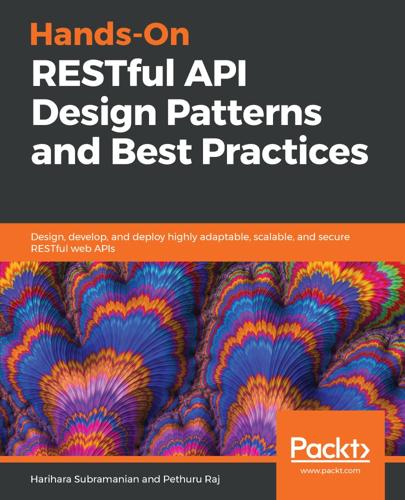
Hands-On RESTful API Design Patterns and Best Practices
by
Harihara Subramanian
Published 31 Jan 2019
By having this main method as a way of spinning up, the process leads to the following: No need to manage the traditionally-burdensome Java production process Gets rid of PermGen issues No need to customize the application server's configuration No need for separate deployment tools No classloader issues Jersey for REST As we know, the JAX-RS reference implementation Jersey is open source; it comes with its native API toolkit to simplify the development of RESTful web services and their clients in Java. Jersey also exposes numerous extension SPIs (software platform infrastructure as a services model). Dropwizard bundles Jersey as its RESTful web app framework and helps developers to write clean code, providing testable classes that gracefully map HTTP requests to simple Java objects that streaming output, matrix URI parameters, conditional GET requests, and so on. Jackson A critical need for app developers is having the object mapper from JSON and allowing the domain model to export directly to those Java objects.

Vassal State
by
Angus Hanton
Published 25 Mar 2024
The company is owned by US investors, led by Sequoia Capital of Menlo Park, California.42 Life-as-a-Service, with its unavoidable and potentially crippling outgoings, has become a way of life not just for millions of consumers but for UK companies and the government. Organisations have signed up en masse to pay monthly for software and other services. There has been exponential growth in ‘cloud computing’ such as Software-as-a-Service (programs), Platform-as-a-Service (hardware and software for running apps), Infrastructure-as-a-Service (hosting of websites) and Communications-as-a-Service (communications systems). So the Brits and their companies are being rapidly moved from being owners of their assets to being renters and then borrowers, and much of what they consume and pay for is done through the monthly treadmill.
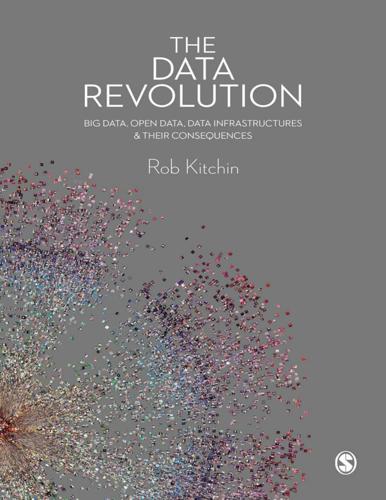
The Data Revolution: Big Data, Open Data, Data Infrastructures and Their Consequences
by
Rob Kitchin
Published 25 Aug 2014
Since then, the relative share of digital data has continued to grow, especially with the development of distributed storage and services through cloud computing and data centres. Cloud computing takes two forms that often work cooperatively: utility clouds and data clouds (Farber et al. 2011). Utility clouds provide IT capabilities as locationindependent, on-demand services accessible via the Internet, including ‘infrastructure as a service’ (IaaS) such as storage, servers and networks, ‘platform as a service’ (PaaS) comprising an execution environment for the development of custom applications and databases, and ‘software as a service’ (SaaS) that enables users to access their applications and to process data remotely (Farber et al. 2011; Hancke et al. 2012).

Digital Bank: Strategies for Launching or Becoming a Digital Bank
by
Chris Skinner
Published 27 Aug 2013
Cloud Computing is a wide and diverse operation that has gained a panacea status of being all things to all people. It’s Salesforce.com, Azure, Exalogic, Amazon and more. Put in “Cloud Computing” to Google, who also provide clouds, and you get sponsored adverts from HP, Intel, Siemens and more all talking about clouds. It’s Software as a Service, Platform as a Service, and Infrastructure as a Service. It’s public clouds, private clouds, hybrid clouds. It’s every and any darned thing you want and, as a result, it’s lost its meaning. As a result, bank CIO’s have heard about Cloud Computing, but have no idea how to articulate what it is to their Board and CEO, how to justify it, how to present it as meaningful and how to get a decision.
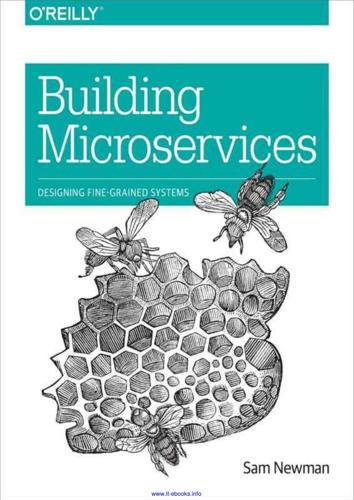
Building Microservices
by
Sam Newman
Published 25 Dec 2014
And certainly make sure you can get access to the raw data to provide your own reporting or dashboards if you need to. Another key benefit of understanding your trends is when it comes to capacity planning. Are we reaching our limit? How long until we need more hosts? In the past when we brought physical hosts, this was often an annual job. In the new age of on-demand computing provided by infrastructure as a service (IaaS) vendors, we can now scale up or down in minutes, if not seconds. This means that if we understand our usage patterns, we can make sure we have just enough infrastructure to serve our needs. The smarter we are in tracking our trends and knowing what to do with them, the more cost effective and responsive our systems can be.
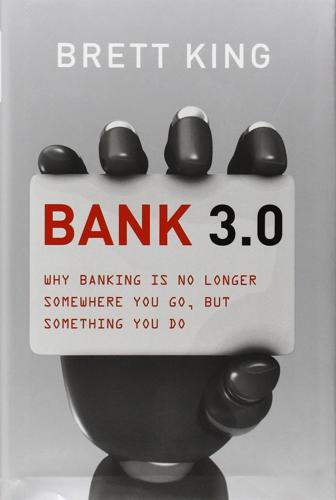
Bank 3.0: Why Banking Is No Longer Somewhere You Go but Something You Do
by
Brett King
Published 26 Dec 2012
Harte explained the rationale behind this move as looking to reduce the cost of purchasing IT and related infrastructure by paying for services on demand as CBA grew, especially as reliance on more digital integration and real-time engagement became essential to CBA’s customer experience. In December 2011, Deutsche Bank went live with its first phase of cloud deployment, namely its IaaS (Infrastructure as a Service) development platform. One of the imperatives at DB was faster development times for bank partners, developers and vendors, and what it called an “aggressive standardisation” attempt. So the first driver for private cloud deployment is clear. Standardisation of employee internal applications and systems across the enterprise, and very agile platforms that can scale up and down with demand.

CIOs at Work
by
Ed Yourdon
Published 19 Jul 2011
Yourdon: Funny you should mention that. That was the very next thing on my list of questions. What are some of the new trends that you think are really going to influence your situation over the next couple of years? Wakeman: Well, call it virtualization, call it cloud computing, call it private public, or call it infrastructure as a service. That is huge. The ability to buy infrastructure and software as services is having a tremendously disruptive impact to the IT industry. Now, I think for my IT organization, where we outsourced our infrastructure nine years ago—we’re on our tenth year of that contract—we’re better prepared for that transition than others because we don’t own our data center or the staff that manage it.

Connectography: Mapping the Future of Global Civilization
by
Parag Khanna
Published 18 Apr 2016
This cyber autarky is crucial in an age of denial of service cyber attacks and other disruptions. But very few countries can offer quality alternatives. For emerging markets such as Vietnam and Malaysia, attempting to build indigenous systems means wasting billions of dollars when instead they can take advantage of low-cost Infrastructure as a Service cloud-based software, data storage, and enterprise applications. In such countries, citizens also suffer the double whammy of having their data no longer secure “offshore” but vulnerable “onshore.” Subjected to restrictions on online speech and data security violations, citizens mobilize not just on the Internet but for their right to unfettered use of it, shifting their data to new Google, Amazon, or other services safeguarded from government intrusion just as Chinese and Russian citizens move their cash abroad.

Seeking SRE: Conversations About Running Production Systems at Scale
by
David N. Blank-Edelman
Published 16 Sep 2018
Protocols Modern distributed applications are composed of many protocols related to real-time remote procedure calls (RPC) (e.g., REST, gRPC, HTTP/1.1, and HTTP/2), messaging (e.g., Kafka and Kinesis), caching (e.g., Redis and memcached), and databases (e.g., MySQL and MongoDB). Infrastructures Across the industry we now see applications deployed across on-prem assets, virtual machines within Infrastructure as a Service (IaaS; e.g., AWS Elastic Compute Cloud [EC2] and Google Compute Engine [GCE]), Containers as a Service (CaaS; e.g., AWS Elastic Container Service [ECS] and Google Kubernetes Engine [GKE]), and “serverless” or Functions as a Service (FaaS; e.g., AWS Lambda and Google Cloud Functions). Load balancers Load balancers are a primary component of a distributed architecture.
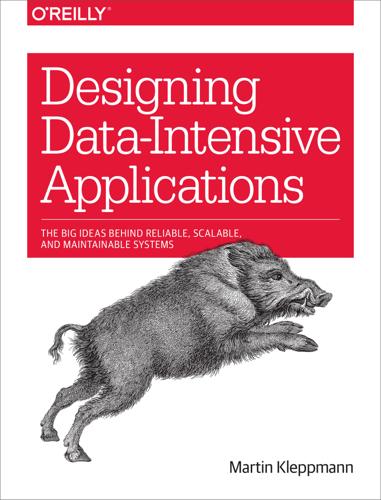
Designing Data-Intensive Applications: The Big Ideas Behind Reliable, Scalable, and Maintainable Systems
by
Martin Kleppmann
Published 16 Mar 2017
CPU clock speeds are barely increasing, but multi-core processors are standard, and networks are getting faster. This means parallelism is only going to increase. Even if you work on a small team, you can now build systems that are distributed across many machines and even multiple geographic regions, thanks to infrastructure as a service (IaaS) such as Amazon Web Services. Many services are now expected to be highly available; extended downtime due to outages or maintenance is becoming increasingly unacceptable. Data-intensive applications are pushing the boundaries of what is possible by making use of these technological developments.